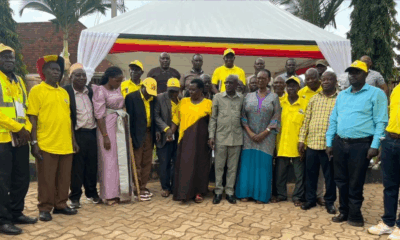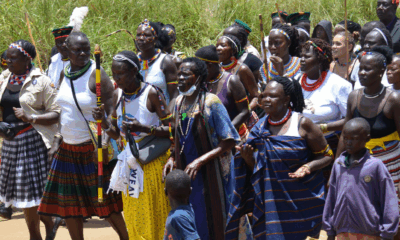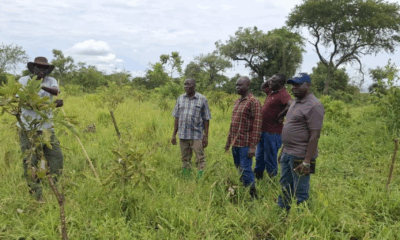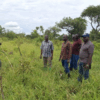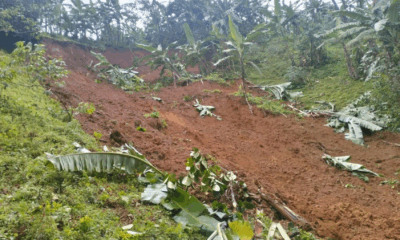Environment
Uganda’s E-Mobility Sector Accelerates with Over $160 Million Investment and Ambitious Growth Targets
Uganda’s E-Mobility sector is experiencing significant growth, fueled by substantial government investment and a clear strategic vision. According to the recently released Uganda E-Mobility Outlook Report 2024, over $160 million was invested in twelve companies within the E-Mobility Ecosystem between 2018 and 2024, spanning research & development, manufacturing, and charging infrastructure. A remarkable 70% of this investment originated from the Ugandan government, underscoring its commitment to the sector.
Minister of Science, Technology, and Innovation, Monica Musenero, highlighted the success of these interventions in her foreword to the report: “With our intentional fiscal and non-fiscal interventions, we have attracted investment of over USD 160 million and built the nation’s capacity to produce up to 10,000 electric vehicles annually with up to 40% local content.”
The report, an annual publication detailing advancements in Uganda’s e-mobility landscape, also revealed a robust future, with a total investment commitment from the private sector of $800 million over the next five years. This optimistic outlook comes ahead of the National Science & Technology Week 2025, set to showcase Uganda’s progress in igniting a qualitative leap in its economy, with an exhibition in Kololo demonstrating market-fit Ugandan products.
Uganda has witnessed a dramatic increase in the production and adoption of electric vehicles. The number of electric motorcycles produced annually soared from just 13 in 2019 to 2,795 in 2024, marking a remarkable 139% growth between 2023 and 2024. Cumulative electric motorcycle production since 2019 stands at 4,254 units, with key players including Gogo Electric, Zembo, Spiro, and Redvers contributing to this growth.
Beyond two-wheelers, Uganda’s full electric and hybrid electric vehicle stock (excluding electric two- and three-wheelers) surged from a mere 2 units in 2019 to 1,127 units in 2024. A significant 88% of these vehicles were registered in 2024, demonstrating accelerating adoption. The breakdown reveals that 8% were Fully Electric Vehicles (FEV), 2% Plug-in Hybrid Electric Vehicles (PHEV), and 90% Hybrid Electric Vehicles (HEV), with SUVs and hatchbacks dominating all categories.
Currently, over 5,000 electric motorcycles and 27 electric buses are on Ugandan roads, boasting up to 40% local content and supported by a growing charging infrastructure.
Uganda’s E-Mobility interventions are guided by the Energy Policy for Uganda 2023 and the National E-Mobility Strategy 2023. Published on October 31, 2023, the National E-Mobility Strategy aims to position Uganda as a net source of e-mobility tools and solutions in the region, reducing import dependence and improving the well-being of its citizens.
The strategy outlines ambitious targets: Uganda’s full transition to e-mobility in public transport and motorcycles by 2030, and passenger vehicle sales by 2040.
A key focus is enhancing local content. In 2024, local content for locally produced electric vehicles reached 21% for electric buses and up to 40% for electric motorcycles. The nation has successfully built capacity to produce essential components such as Lithium-Ion Battery Packs, auxiliary batteries, tyres & tubes, oil & fuel filters, air cleaners, fasteners, wipers, side mirrors, electronics, wiring harnesses, lubricants, and automotive paints, primarily serving the after-market.
The report emphasizes the significant opportunity in localizing the EV battery and battery energy storage systems for substantial value addition. The National E-Mobility Strategy targets a fully integrated domestic battery manufacturing and recycling value chain, aiming to produce over 1GWh of batteries annually by 2040. As of 2024, Uganda had a combined installed production capacity of 0.12GWh of Lithium-Ion Battery Packs by key players like Gogo Electric, Soleil Power, and Zembo, mainly serving the electric motorcycle segment and other battery energy storage systems. Annual production of battery packs for E-Mobility grew from 0.14MWh in 2019 to over 25.89MWh in 2024, a 167% growth from 2023 to 2024.
Uganda’s E-mobility journey includes significant strides in public transport. E-Bus Xpress, Uganda’s first electric bus mass transit service provider, launched in November 2024, operating seven Kayoola EVS electric buses from Kiira Motors Corporation on three routes: Jinja-Iganga, Jinja-Mutai, and Jinja-Mbiko. This pilot service is fully funded by the Government of Uganda, with plans to expand to other cities.
Additionally, FreedomEV, an e-mobility start-up, introduced electric commuter vans in Kampala, offering a sustainable alternative to traditional 14-seater internal combustion engine vans, currently operating a fleet of two. Electric bicycle production also commenced in 2023 with 25 units, growing over 17-fold to 440 units in 2024 by manufacturers such as Karaa, eBee, and Harakka.
Comments




